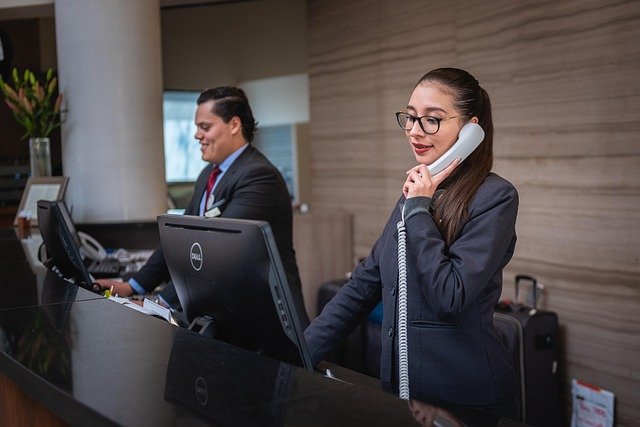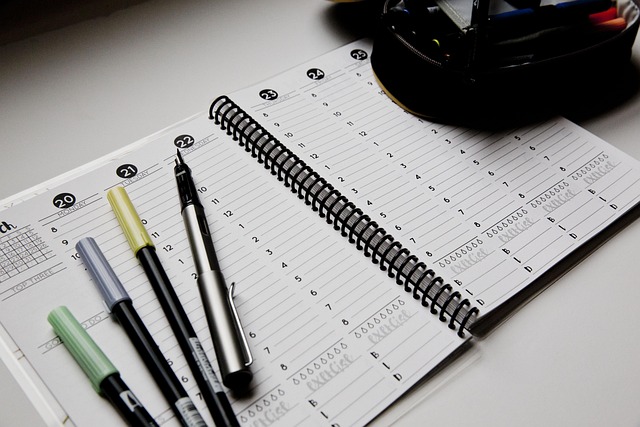How Daily Work Inside Qatar Hotels Is Structured Behind the Scenes
Hotel environments in Qatar rely on a set of coordinated routines that shape the flow of each day across multiple departments. This article explores how teams manage guest logistics, how housekeeping cycles unfold, and how front-desk operations synchronize with service roles during busy hours. Without focusing on hiring or employment details, it presents an inside look at the processes, timing patterns, and interdepartmental coordination that define the internal rhythm of hotel operations in Qatar. The closer you examine these systems, the more layered and interconnected they reveal themselves to be.

How Daily Work Inside Qatar Hotels Is Structured Behind the Scenes
Inside a Qatar hotel, each day is shaped by predictable patterns, timed routines, and constant communication between teams. While guests mainly see the front desk or the restaurant, much of the work takes place out of sight, in service corridors, control rooms, and back offices. The way shifts are arranged, tasks are sequenced, and information flows between departments creates a steady rhythm that keeps the property running calmly even during very busy periods.
Internal workflow patterns in Qatar hotels
Daily operations usually begin before sunrise, when night staff close their shift and early teams arrive. In many Qatar hotels, the first stage is a review of occupancy reports that show which guests are arriving, staying over, or departing. Duty managers and supervisors use this information to plan room allocations, housekeeping priorities, and staffing for guest areas such as breakfast venues and reception. These patterns repeat every day, often guided by written standard operating procedures.
Back-of-house zones, from laundry to stewarding, follow their own cycles that support the guest-facing areas. Linen is collected and processed according to forecasted occupancy, while engineering teams review overnight incident logs and plan preventive maintenance. Security and safety checks, including emergency equipment inspections and access control reviews, are scheduled for low traffic times so they do not disturb guests. All of this is coordinated to align with local regulations and internal brand standards common in Qatar hotel operations.
How departments interact during peak hours
The busiest times inside many Qatar hotels are usually check in and check out periods, breakfast service, and evening dining. During these peak hours, interaction between departments becomes more intense and more structured. Front office staff, concierge, bell service, and transport coordinators must stay aligned to move guests, luggage, and vehicles smoothly through entrances and driveways. Any delay in one step can slow the entire flow.
To manage this, teams rely on shared tools such as property management systems and messaging platforms that show live information about arrivals, departures, and room status. If a flight is delayed into Hamad International Airport, the front office updates expected arrival times, while concierge and transport adjust schedules. Food and beverage teams track occupancy forecasts and reservation lists from the front desk so they can prepare enough seating and staff for busy restaurant periods without overcrowding workstations.
Guest-service coordination routines
Much of the hidden structure in a Qatar hotel involves how guest requests are received, assigned, and confirmed. Calls, messages, and in person questions from guests may be handled through a central service center or guest experience desk. Staff there log each request in a system that automatically routes it to the right department, whether it is housekeeping, engineering, front office, or food and beverage.
Clear time targets are usually attached to each type of request. For example, delivering extra towels, arranging a wake up call, or checking a television connection will each have a standard completion window and a follow up confirmation step. Supervisors then monitor open tasks and gently escalate any that are overdue. This routine helps avoid duplicated work, ensures accountability, and reduces the risk that a request is missed during a shift change.
Housekeeping sequences and timing
Housekeeping in Qatar hotels follows a carefully planned sequence that connects closely to front office information. Early in the day, supervisors receive lists of check out rooms, stay over rooms, and rooms on special status, such as long stay guests or those requiring particular amenities. Based on this, room attendants receive a route plan that minimizes walking time between rooms and floors while respecting guests privacy and preferences.
Typical timing structures prioritise check out rooms first so they will be ready for new arrivals in the early afternoon. Stay over rooms are then cleaned in stages, often grouped by floor or building section. Communication devices allow room attendants to mark rooms as in progress, inspected, or ready, which instantly updates the system used by the front office. This coordination is especially important during high occupancy events in Qatar, such as major conferences or sports tournaments, when the gap between departure and arrival times can be short.
Laundry and public area cleaning are integrated into the same timing framework. Soiled linen is transported continuously to avoid pile ups, while lobby and corridor cleaning is planned for quieter traffic periods. Night housekeeping teams may handle deep cleaning tasks in restaurants, ballrooms, and back corridors so that daytime staff can focus on visible guest areas.
The hidden rhythm of hotel operations
Beyond visible schedules, there is a subtle rhythm that shapes how staff move, communicate, and hand over responsibilities in Qatar hotels. Pre shift briefings are a common feature: short meetings where supervisors share expected occupancy, VIP arrivals, group bookings, and any special cultural or event considerations for the day. In Doha, for example, this may include updates about local festivals, national holidays, or large events nearby that may affect traffic and guest expectations.
Cross department coordination continues through informal check ins at key times. Front office leaders might walk through the lobby and restaurants to observe guest flow, while housekeeping and engineering supervisors review high priority rooms together. At night, duty managers perform rounds through guest floors, back corridors, and technical areas to verify that the property remains safe, quiet, and orderly until morning teams return.
Shift handovers form another important part of this rhythm. Outgoing staff document unresolved tasks, guest preferences, and any unusual incidents in logbooks or digital systems. Incoming teams review these notes before starting their duties so that service remains continuous rather than restarting each shift from the beginning. This approach is especially important in a multicultural environment like Qatar, where colleagues may come from diverse backgrounds and rely on structured processes to maintain consistency.
All of these elements together create a behind the scenes framework that allows Qatar hotels to feel calm and welcoming on the surface. The internal workflow patterns, timed housekeeping sequences, coordinated guest service routines, and carefully managed peak periods combine into a system that supports both staff and guests. By understanding this hidden structure, it becomes clear how many interconnected actions are required to deliver a smooth experience from check in to final departure.




